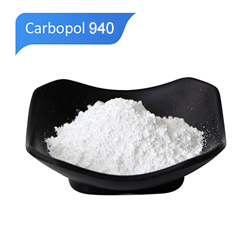In the food processing industry, ensuring food safety and extending the shelf - life of food are of utmost importance. Natamycin, a natural and highly effective food preservatives, is increasingly favored by food processing plants. This article will delve into the characteristics of natamycin, its applications in food processing, usage methods, and precautions, providing a comprehensive reference for food processing enterprises.
I. Basic Characteristics of Natamycin
Natamycin, also known as pimaricin, is a polyene macrolide antibiotic produced by the fermentation of Streptomyces natalensis. Its unique molecular structure consists of a polyene lactone ring and an amino sugar. This structure endows it with excellent antibacterial properties, especially a strong inhibitory effect on molds and yeasts.
Natamycin exhibits good stability. It remains stable within a pH range of 3 - 9 and can maintain its activity for a long time in a dry state. Moreover, it has extremely low water solubility. This allows it to form a protective film on the surface of food, releasing slowly and exerting its antibacterial effect without dissolving extensively in the interior of the food, thus minimizing any impact on the flavor and taste of the food.
II. Applications of Natamycin in Food Processing
A. Baked Goods
In baked goods such as bread and cakes, the growth of molds often leads to spoilage and a shortened shelf - life. Natamycin can effectively inhibit the growth of molds and extend the shelf - life of baked goods. For example, during the bread - making process, spraying a natamycin solution on the surface of the bread can form an antibacterial film, preventing the invasion and growth of mold spores, and keeping the bread fresh at room temperature for a longer period.
B. Dairy Products
Dairy products are rich in nutrients and are prone to contamination by molds and yeasts. Natamycin can be used for the preservation of cheese, yogurt, and other dairy products. In cheese production, adding natamycin to the surface coating of cheese can inhibit the growth of molds on the cheese surface, maintain the quality and appearance of the cheese, and at the same time, not affect the internal fermentation process and flavor of the cheese.
C. Meat Products
Meat products also face the risk of microbial contamination during storage and sales. Natamycin E235 can be used to inhibit the growth of molds and yeasts on the surface of meat products, preventing the meat from becoming moldy, discolored, and developing off - odors. In the processing of sausages, hams, etc., soaking or spraying with a natamycin solution can effectively extend the shelf - life of meat products and improve product safety.
D. Beverages and Fruit Juices
In some acidic beverages and fruit juices, the growth of yeasts can cause the products to ferment and deteriorate. Natamycin can effectively inhibit yeasts at low doses, ensuring the clarity and stability of beverages and fruit juices, extending their shelf - life, and at the same time, not affecting the taste and color of the beverages.
III. Usage Methods of Natamycin
A. Dissolution and Dilution
Due to the low water solubility of natamycin, it is usually first dissolved in an appropriate amount of dilute acid solution (such as acetic acid or citric acid). Stir thoroughly to ensure it is fully dissolved, and then dilute it to the required concentration. Generally, controlling the dissolution temperature at 40 - 50°C can accelerate the dissolution process.
B. Addition Methods
Depending on the type of food and the processing technology, natamycin can be applied by spraying, soaking, smearing, or adding it to food packaging materials. For example, for baked goods and meat products, spraying or smearing is suitable; for liquid foods such as fruit juices and beverages, the diluted natamycin solution can be directly added to the product before filling.
IV. Precautions for Using Natamycin
A. Strictly Comply with Dosage Standards
As a food additive, the usage amount of natamycin is strictly regulated by laws and regulations. Food processing enterprises must strictly add it according to the maximum usage amount specified in national standards to ensure food safety. For example, in different food categories, the maximum usage amount of natamycin usually ranges from 0.05 - 0.3g/kg. The specific amount needs to be determined according to the type of food and relevant regulations.
B. Ensure Uniform Distribution
To ensure that natamycin exerts its best antibacterial effect, it is necessary to ensure its uniform distribution in the food. During the usage process, pay attention to the uniformity of stirring, spraying, or soaking to avoid excessive or insufficient local concentrations, which may affect the preservation effect.
C. Use in Synergy with Other Preservation Measures
Although natamycin has good antibacterial properties, to more comprehensively ensure the safety and quality of food, it is recommended to use it in synergy with other preservation measures such as low - temperature storage, vacuum packaging, and pasteurization. These measures can form multiple preservation barriers and extend the shelf - life of food.
Get Quotes
 Food Grade Sodium Hyaluronate
Food Grade Sodium Hyaluronate Cross-linked Sodium Hyaluronate
Cross-linked Sodium Hyaluronate Cosmetic Grade Sodium Hyaluronate
Cosmetic Grade Sodium Hyaluronate D-panthenol
D-panthenol γ-Polyglutamic Acid
γ-Polyglutamic Acid Allantoin
Allantoin Alpha Arbutin
Alpha Arbutin Beta Arbutin
Beta Arbutin Kojic Acid
Kojic Acid Kojic Acid Dipalmitate
Kojic Acid Dipalmitate 3-o Ethyl Ascorbic Acid
3-o Ethyl Ascorbic Acid Ascorbyl Glucoside
Ascorbyl Glucoside β-Nicotinamide Mononucleotide(NMN)
β-Nicotinamide Mononucleotide(NMN) β-Nicotinamide Mononucleotide(NMN)
β-Nicotinamide Mononucleotide(NMN) Nicotinamide Adenine Dinucleotide(NAD+)
Nicotinamide Adenine Dinucleotide(NAD+) Glutathione
Glutathione Coenzyme Q10
Coenzyme Q10 Pyrroloquinoline Quinone(PQQ)
Pyrroloquinoline Quinone(PQQ) Chondroitin Sulfate
Chondroitin Sulfate Methyl Sulfonyl Methane
Methyl Sulfonyl Methane Glucosamine Hydrochloride
Glucosamine Hydrochloride Glucosamine Sulfate Potassium Chloride
Glucosamine Sulfate Potassium Chloride N-Acetyl-D-Glucosamine
N-Acetyl-D-Glucosamine Vitamin K2
Vitamin K2
















































